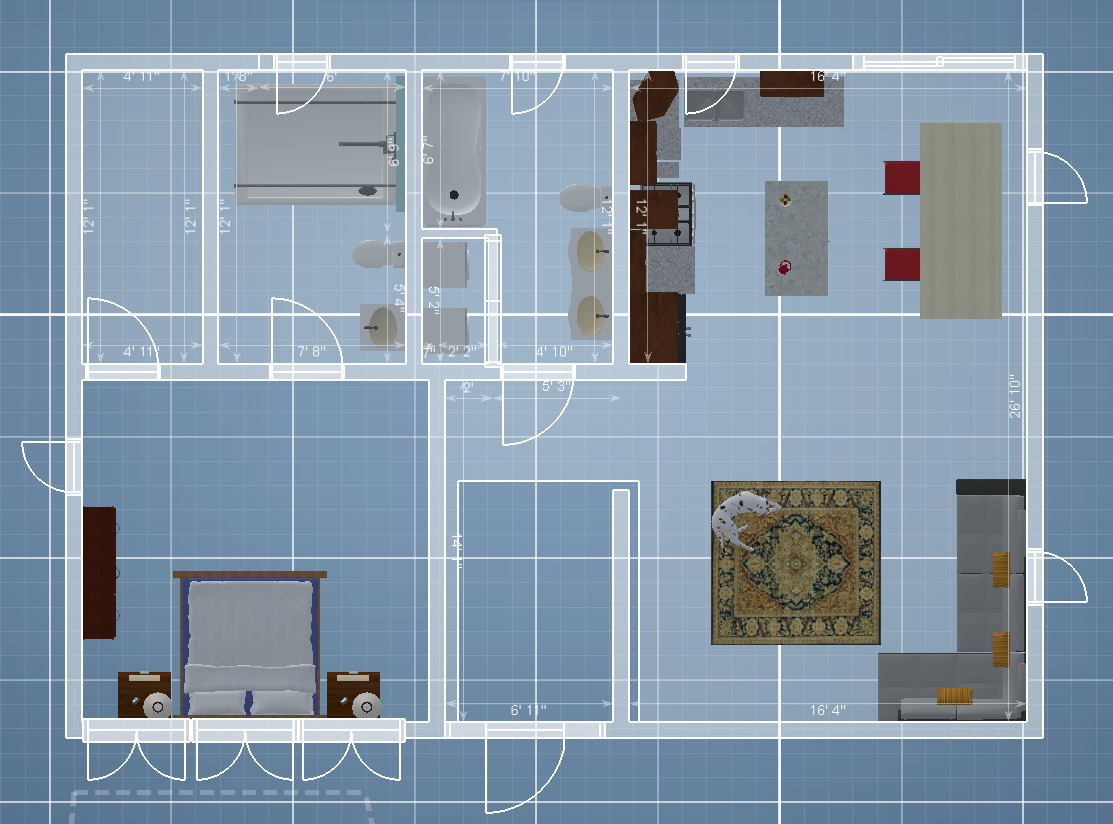So What About Those Smart Home Devices?
Think you don’t need a smart home device? Well, you might want to rethink your pre-conceived notions of what a smart home device can do for you! While many people think smart home devices like Amazon’s Echo (i.e.- “Alexa”) or Google Home are unnecessary luxuries, for people with a vision impairment they can be a great tool for making a number of everyday tasks much easier.
But aren’t they complicated to use? Well, yes and no. The truth is, initial set-up can be a bit daunting for some people, but once set up their use is quite easy. After all, is it “easier” to move a task lamp, get out a magnifier and strain to read a recipe with difficulty, or is it “easier” to ask your smart home device to give you step by step instructions where you don’t have to strain to read? There’s obviously a subjective component in answering that, but when you consider that a typical smart home device can eliminate the need for vision for literally dozens of daily tasks, one begins to consider that maybe a small investment in learning to use the device might be worth it.
Learning to use a smart home device is really quite easy. A person does need to remember to use the “wake up” word or phrase such as “Alexa,” “Echo,” “Computer,” Hey Google,” or “Okay Google” prior to any command or request, but after that it isn’t too difficult. At a recent workshop with eight visually impaired seniors (some of whom had used smart home devices and some who hadn’t) they were challenged to come up with as many novel tasks or questions as possible for their smart home device. Almost all of the tasks or questions resulted in an appropriate response from the device, demonstrating that these devices are responding much better to natural language than they were just a few years ago. “Alexa, tell me who’s playing in the Thursday night football game” and “Alexa, what are the hours for the Rite Aid pharmacy in Hookset” all generated appropriate responses and the participants commented that to have looked this up through traditional means would have been much more difficult.
Not convinced yet? Well, here’s just a taste of some of the things a smart home device can do for you all by you using your voice—no vision required!
Announce the current time
Set a timer
Set an alarm
Set a recurring reminder (i.e- for medications)
Generate a shopping list
Let you know you have a package outside
Make voice activated phone calls and text messages
Tell you an address
Tell you hours of operation
Give you sports scores
Tell you what is on TV
Maintain a calendar
Read aloud newspapers and periodicals (i.e.- NFB Newsline)
Reading books – via an Audible subscription
Read aloud religious material
Tell you the weather- current and forecast… local or wherever!
Provide recipe instructions step by step
Provide music (Pandora, Spotify, Amazon, etc…)
Broadcast podcasts / News (Hardcore History, NPR, The Moth, etc…)
Play games (Jeopardy, Song quiz, etc…)
Make announcements to others
Check in on loved ones (i.e.- Drop in, Care Hub)
Find your phone
Answer trivia questions
Generate sleep Sounds
Identify an item (“Alexa what am I holding?” with camera enabled devices)
Tell jokes
Provide guided meditation
Provide compliments
Tell you how words are spelled
Find an address
Perform math calculations
Call an Uber, Lyft
Order a Pizza
And when paired with other smart home devices you can:
Voice control lights (turn them on/off, adjust brightness or color)
Voice control a smart thermostat
Voice control anything “dumb” with an on/off switch (bed heater, coffee maker, etc…)
Act as a security system (Ring doorbell)
Cook food (Amazon smart oven, Amazon microwave)
Dispense water precisely (Moen smart faucet)
Autonomously vacuum/scrub floors/rugs: (i.e.- Roomba and Scooba)
So besides having an open mind to the use of technology, what do you need to get started with a smart home device? Requirements vary, but generally speaking at the most basic level you need a smartphone with the ability to run either the Alexa app or the Google Assistant app. Most people prefer to have a dedicated device in their home that is equipped with a microphone and a speaker so that even without their phone nearby they can still interact with the device. The device need not have a camera or a display, but there will be additional functionality built in to these devices which won’t be available on other devices (i.e.- identifying food items based on appearance or barcode scanning). Finally, WiFi is the glue that binds smart home devices together!
If this sounds like something you think could benefit yourself or someone you know, contact Home For Living at 603-475-4703 or from the contact form online.
Post by Beth Daisy, MSOTR/L, CAPS

